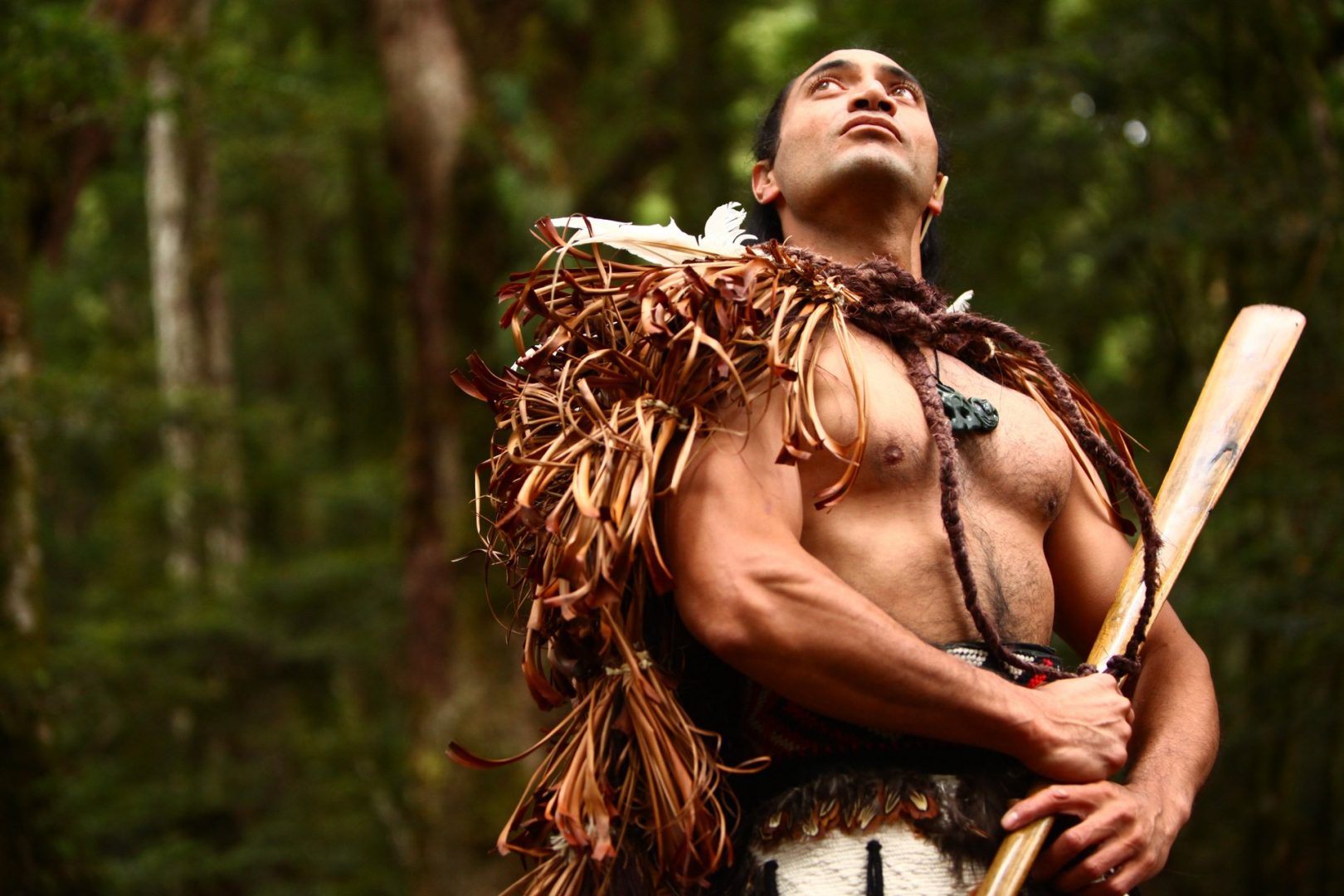The Whakatane District is an area in the Bay of Plenty region, straddling part of the bay’s eastern coastline and reaching inland to the fertile Rangataiki Plains. In addition to its sprawling agricultural sector, which produces high quality timber and dairy products, as well as kiwifruit, apples, and seafood, the district is also a bustling hub of Maori heritage. Its sandy beaches, lowlands, hills and hectares of bush are home to seven different tribes, or iwi.
The Ngati Awa and Ngai Tuhoe are the two most prominent iwi based in the Whakatane District. Most Ngati Awa settlements lie in the Rangataiki Plains, while the Tuhoe are centred around the high, hilly forest of their traditional land, Te Urewera. Many members of both tribes live in the district’s urban centres in Whakatane-Ohope, Edgecumbe, and Murupara and maintain tight links to their native ancestry, or whakapapa.
History
The Ngati Awa and Tuhoe iwi are said to descend from Tiwakawaka, the grandson of the legendary seafarer, Maui, who is commonly believed to have discovered Aotearoa, the land which is known today as New Zealand. The tribesmen of Tiwakawaka intermarried into the Toi people, as their stronghold in Kakahoroa, currently Whakatane, grew and bore other communities.
The Mataatua waka, a great migration canoe, carried the people of Toroa to the estuaries of Kakahoroa to settle there. As the men sortied to meet the natives, the women were left to contend with a strong tide that threatened to carry Mātaatua away from the shore. Despite their tradition discouraging women from seafaring, Wairaka, Toroa’s daughter, exclaimed “E! Kia whakatane au i ahau” (“let me act the part of a man”), which rallied the women around her to paddle their canoe back to shore. Whakatane is named after her heroic declaration.
From the descendants of Tiwakawaka, the Toi, and Captain Toroa’s waka, the Ngati Awa and Tuhoe emerged. Maori folklore claims Awanuiarangi II founded the former tribe, while the latter is named after Tūhoe-pōtiki. In the present date, rich oral tradition of the tribes’ origin persists.
Population
The 2013 national census places the Tuhoe population at 34,980, only 5,000 of which occupying their ancestral lands. The same census counts 16,179 individuals who affiliate with the Ngati Awa iwi. Over half of the people of Awanuiarangi live in Whakatane’s urban areas. There are many more speakers of te reo maori, the Maori language, in Whakatane than in the national average, owing to the different peoples’ close connection with the land’s history.
Economy
In the Maori tongue, the spirit of Whakatane’s land is called the mana whenua, and the Ngati Awa and Tuhoe are regarded as the mana whenua’s loyal stewards. With the advent of industrialization brought the pakeha, or European settlers, the two tribes have had considerable influence in preserving their native natural and social environment. Language and culture are deeply ingrained in both urban and rural society, and in young and old alike. Ancestral traditions, like the tangihanga funeral, marae gatherings, showcasing of memorial stones, and adventures into bush country, remain diligently observed.
With their mastery over their homeland, input from the two iwi is vital to the numerous commercial operations in Whakatane District, such as in ascertaining soil fertility, studying native flora and fauna, preserving important tangata whenua sites, and enculturating others in te reo maori and Maori values, such as kinship, harmony with nature, and competition through tribal sports, debates and dances.
The traditions, events, and art of the two iwi have also garnered local and international interest. Key tribal attractions include White Island, an active volcanic island, the Mātaatua waka settled upon its landing site at Whakatane, the various pa sites around the district, and the Te Urewera national park. The district offers an abundant variety of biomes for tourism and exploration. Immersion into the life of the Ngati Awa and Tuhoe iwi has become an exciting opportunity for many tourists.

















































